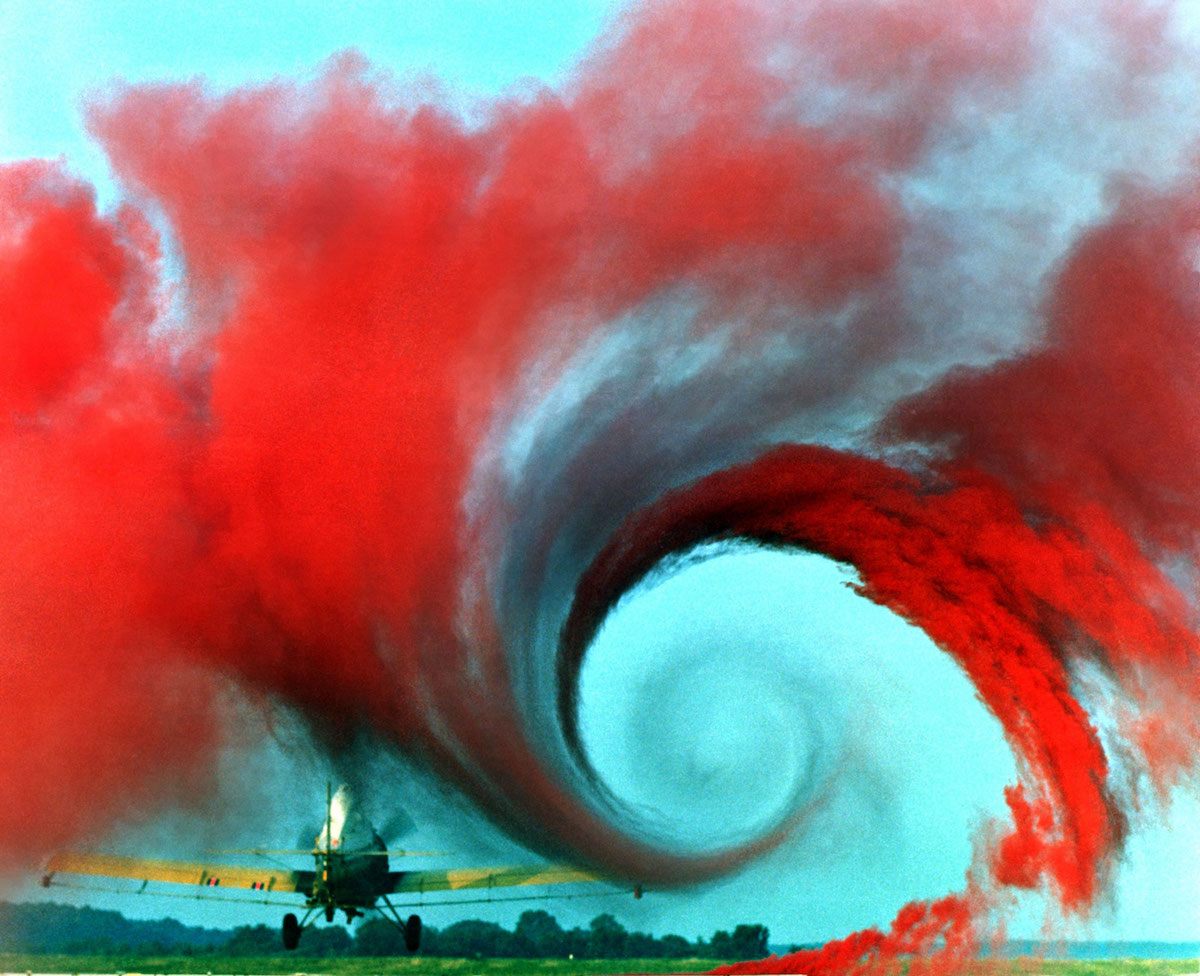Watch a Swirly, Colorful NASA Vortex Test From the ’70s
Wingtip vortices are pretty trippy.
To an observer, the massive, spinning airflow that sometimes trails behind a plane is a beautiful sight. But to NASA, this airflow—known as a wingtip vortex—was a problem in need of exploration.
The vortices, which appeared behind the wings of their aircraft, could be quite dangerous for a pursuant plane: they could make this second aircraft unstable, sometimes causing sudden rolls and altitude dips. NASA knew how the vortices were created: planes generate lift through the difference in air pressure between the top and bottom halves of the wings, a discrepancy that also leaves a rotating airflow—the vortex—trailing the plane’s wingtips.

Aerodynamicist F. W. Lanchester noted this phenomenon back in 1907, but NASA only seriously experimented with the vortices later, during the 1970s. Their goal was to identify the specific dangers the vortices presented and the various factors (such as plane size) that exacerbated them. Larger planes, they found, created larger and more dangerous vortices.
The video above comes from NASA’s newly released video archive, and shows a 1970s wingtip vortices test at Langley Research Center in Virginia. The results are visually stunning.
Video Wonders are audiovisual offerings that delight, inspire, and entertain. Have you encountered a video we should feature? Email ella@atlasobscura.com.


































Follow us on Twitter to get the latest on the world's hidden wonders.
Like us on Facebook to get the latest on the world's hidden wonders.
Follow us on Twitter Like us on Facebook